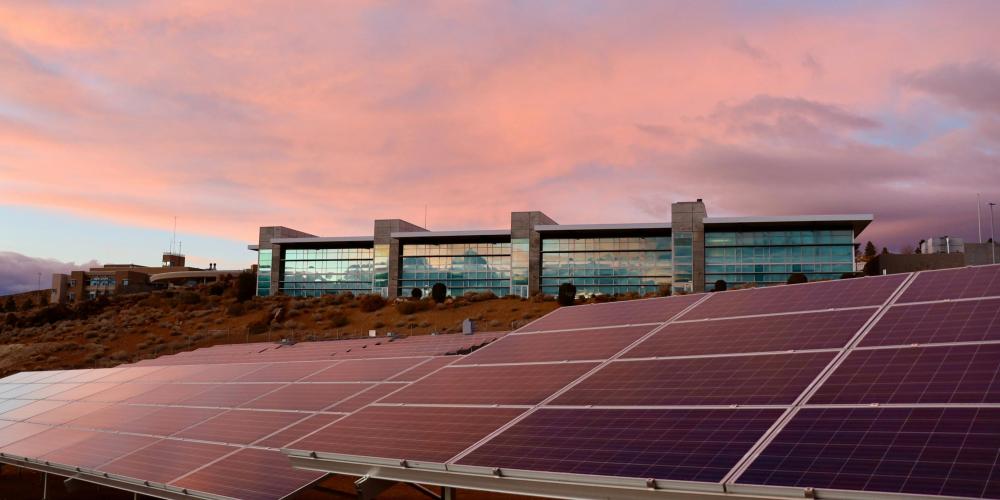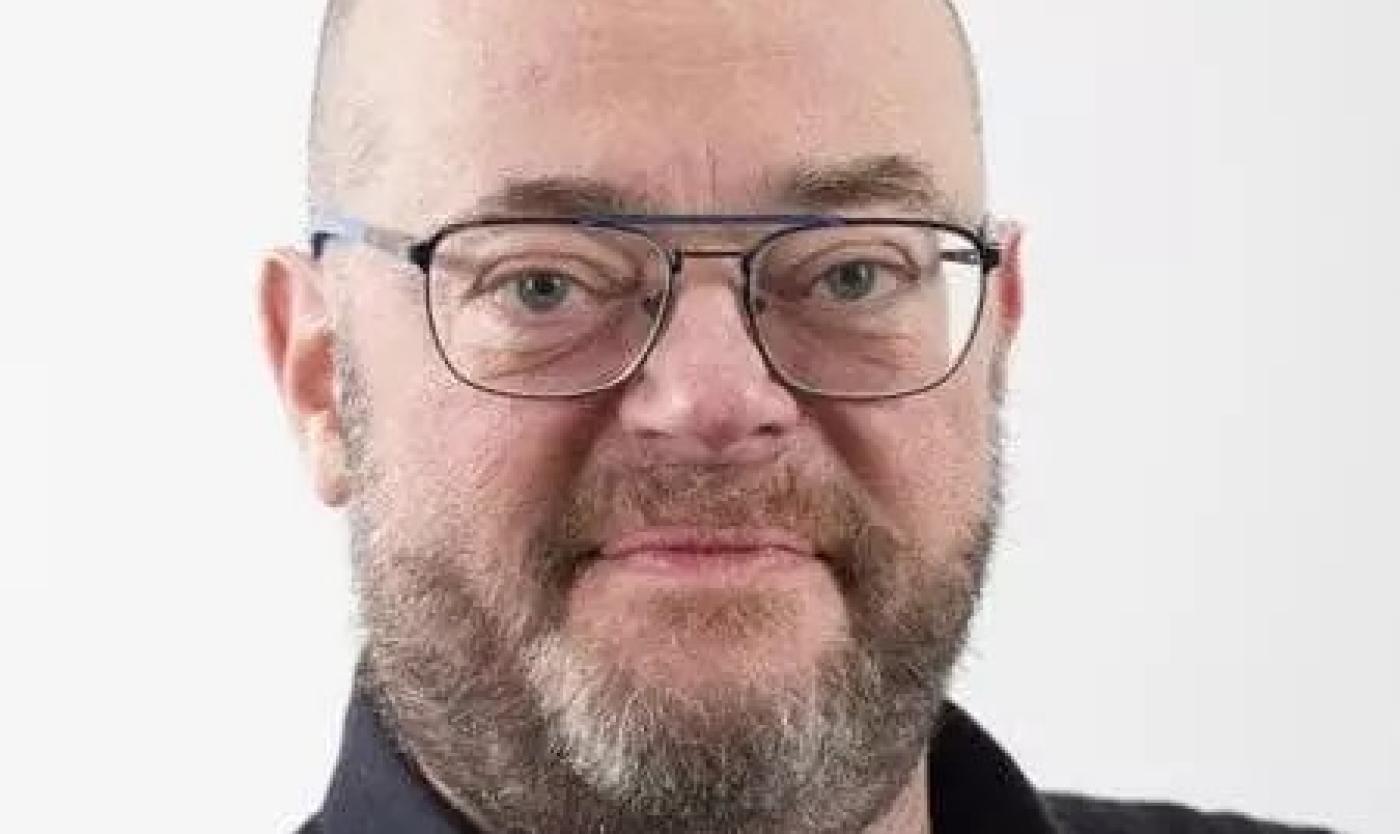
Can science put a stop to the climate crisis? Even the brightest minds don’t yet have a definitive answer — but there’s certainly no shortage of effort. “Yet too many scientists are still working in isolation, without paying much attention to what their colleagues are doing,” say VUB professors Maarten Messagie and Thierry Coosemans. With the interdisciplinary research institute Flanders Alliance for Climate Technology (FACT), they aim to change that.
What is FACT?
FACT – the Flanders Alliance for Climate Technology – officially launched in 2024, but its roots go back to 2018. That’s when Maarten Messagie and Thierry Coosemans, long-time researchers in the Department of Electrical Engineering, decided to take their work on electric vehicles a step further. They founded the EVERGi research group to explore sustainable energy systems.
It quickly became clear that the challenge extended far beyond the traditional scope of electrical engineering. “If you want to generate, distribute and use energy sustainably, you also need to look at heat, cooling, biofuels, hydrogen, e-fuels, and so on,” Coosemans explains. “We no longer live in a world of centralised energy systems powered by large electricity plants. Today, energy production is highly decentralised – many businesses and consumers generate their own electricity, for example through solar panels. Some of that energy is used on-site, but some is fed back into the grid or stored in batteries.”
“Electric vehicles also play a key role in that ecosystem,” adds Messagie. “They’re essentially batteries on wheels. We’re dealing with a completely new reality, which means we have to rethink the energy question from the ground up.”
Dismantling all CO₂-emitting systems
Within EVERGi, a range of technologies that were once separate domains are now being brought together. In a world where systems are increasingly interconnected, scientists from different disciplines need each other to make real progress. “A good example is co-generation, or combined heat and power,” says Coosemans, “where the heat produced by electric generators is reused, for instance in a thermal grid that delivers heat directly to users. You can go a step further and combine that with an electric grid, which creates interesting synergies. Even converting hydrogen into energy – an inherently inefficient process – releases heat. If you can harness that, the process becomes much more sustainable. You can even recover heat from wastewater and use it as a renewable energy source. Each of these scenarios requires different areas of expertise to make them work effectively.”
These are exactly the kinds of applications FACT aims to develop. The ambition is bold: to create a climate-neutral future in collaboration with industry and government. “All CO₂-emitting systems need to be dismantled,” says Messagie. “So we need alternative and innovative technologies to replace them. That’s why we first looked within VUB to identify which research groups we needed to realise that ambition.”
FACT's 8 members
In addition to EVERGi, FACT includes seven other research groups. One is the Acoustic Vibration Research Group (AVRG), which monitors vibrations and stresses in the foundations of offshore wind turbines and uses AI and digital twins to predict structural issues before they occur. Through advanced signal processing, they can also detect when the drivetrain requires maintenance — well before a failure happens or when the turbine starts to underperform. This capability is particularly valuable for offshore installations, which can only be accessed by ship, making repairs significantly more costly and complex than for onshore turbines. .
Naturally, MOBI – the centre of expertise on electric mobility – is also part of FACT. To further reduce CO₂ emissions, the focus there is on the next step in electrifying transport: electric lorries and buses for long-distance travel.
At SUME, researchers are constantly searching for sustainable materials – polymers, metals, and even cement. Traditional cement production releases significant CO₂, but VUB has developed a technique that avoids this entirely.
ETRO.RDI works on technologies like the Internet of Things (IoT) and sensors to create smart systems. These allow for remote data collection from devices and installations, reducing the need for travel. The energy consumption of data centres – which has surged due to AI applications – is also a key concern. Greening AI has become a major mission in a short time.
FLOW is home to experts in thermodynamics and fluid dynamics. They study combustion processes involving biomass, hydrogen, and similar fuels.
The Battery Innovation Center (BIC) focuses on developing sustainable batteries, which involves not only chemistry but also managing the cells within a battery system.
Finally, the chemical engineering group CHIS specialises in gas separation. They can extract CO₂ from the air – another crucial method for reducing atmospheric carbon levels. Or capture CO₂ from point sources such as biogas plants, converting it into biomethane — a renewable counterpart to natural gas suitable for use in marine, automotive, and industrial applications.
Fitting the puzzle pieces together
The challenge FACT faces is aligning all these puzzle pieces – ensuring that this diversity of knowledge and technology works together seamlessly. “That’s far from the case today,” says Messagie. “If you decide to go all-in on hydrogen as a fuel for vehicles, you risk undermining other projects that also depend on hydrogen, like ammonia production, which is essential for agriculture. Contrary to popular belief, hydrogen isn’t infinitely available – producing it requires a lot of energy. That’s why we need constant dialogue between the leaders of all these research groups. If we each stay on our own island, it simply won’t work.”
Messagie also points out that the name FACT was no accident. “FACT is, of course, also the English word for ‘feit’. We want to emphasise that climate change is a fact – one we can’t afford to ignore as a society. But with FACT, we also want to see climate change as an opportunity to develop sustainable technologies and retain industry in Belgium. In that sense, it’s also a political statement.”
For more information: go to fact-vub.be
Living labs
What sets FACT apart – beyond its multidisciplinary approach – is its strong emphasis on demonstrating real-world technology in living labs. “A lab always has its limitations – a real-world setup provides far more data and insights,” says Messagie. FACT currently operates two living labs: the Green Energy Park in Zellik and the first Renewable Energy Valley in Alkmaar. More on those will be featured soon in VUB Tomorrow.

Maarten Messagie holds a PhD in engineering sciences, with a focus on the life cycle sustainability of electric vehicles, batteries and energy systems. He is currently academic co-director of the interdisciplinary research group EVERGi, which integrates knowledge from engineering, environmental, social, economic and data sciences. He also supervises over thirty ongoing projects, many under the HORIZON2020 framework.
Thierry Coosemans earned his PhD in engineering sciences from Ghent University in 2006. After several years in industry, he joined the MOBI research team at VUB, where he now serves as co-director of the EVERGi team for sustainable energy communities and vice-chair of the Department of Electrical and Energy Engineering (ETEC). He is also involved in the scientific support of the Green Energy Park Zellik and has played an active role in Flanders Make, the Living Labs Electric Vehicles Flanders, and VLAIO-funded projects such as ROLECS, MAMUET and OPTIBIDS.
